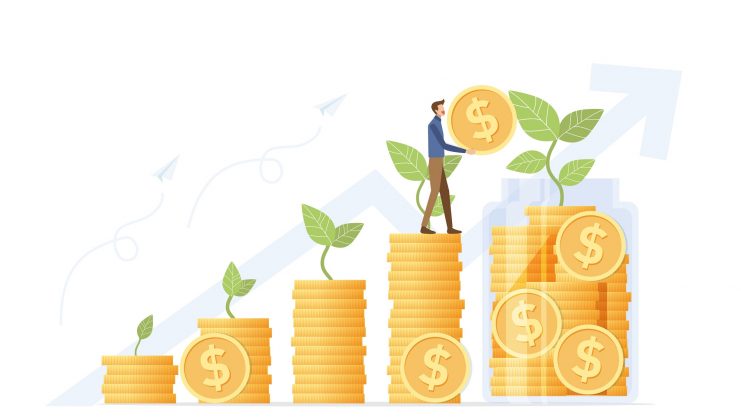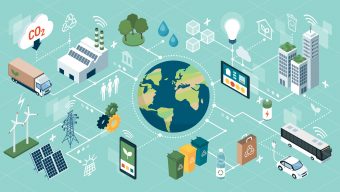The climate crisis has accentuated the need for organizations and individuals across the globe to change and improve their practices. This need for increased sustainability not only poses a challenge but also an opportunity; for us as individuals to reset our lifestyles, and for organizations to find innovative solutions to the problems they face. We asked our experts from a range of fields to detail the challenges and opportunities the climate crisis poses in their area of expertise:
- Isabela del Alcázar looks at how individuals and communities can change their mindset to better face environmental challenges.
- Fabrizio Salvador details how economic development can become more sustainable through increased evaluation and existing management techniques.
- Stephanie Lackner analyzes how best to manage nature as an asset, and the opportunities that disruptive changes in this asset management can provide.
- Germán Granda argues for the need for high-impact collaborations between stakeholders to achieve sustainable change, and sets out four key factors to allow these collaborations to take place.
- Matan Mayer outlines the importance of cities upgrading their current buildings through creative retrofitting rather than new construction, and highlights the benefits this change in agenda could bring.
Isabela del Alcázar
Global Head of Sustainability at IE University
Life on Earth is possible thanks to a set of serendipitous conditions: our position in the solar system, adequate temperatures, and the right chemical ingredients. Natural systems exist in dynamic equilibrium, they’re flexible and adapt to changes. Nevertheless, excessive human activity is diminishing the buffering capacity of the ecosystems, putting life on earth in jeopardy. We need to transform the way we do nearly everything in order to revert this trend.
Innovation, technology, and education can help us find creative ways to proactively solve the challenges our planet is facing. The more each of us learn about climate change, the better positioned we are as individuals to do something about it – and the more we are prepared to acknowledge What I do is a reflection of what my community is, and at the same time how I behave is conditioned by the social norms that rein my community.
The scope and scale of the challenge is huge and it determines (or hinders) which innovations and social norms can make a difference. However, there is no doubt that there is much that we can each do as individuals as well as part of a wider community, whether that be private or public.
Fabrizio Salvador
IE Business School Professor
The sensitivity for environmental issues is an index of a civilization’s maturity. How can we make economic development more compatible with the preservation of natural resources of our planet? It is unquestionable that the protection of our planet deeply connects with our emotional side. Earth is our “mother.” However, emotion should not trump rationality – because the natural environment is a terribly complex and interdependent system which is only partially understood by mankind. The good news is that we can act with “bounded rationality” in at least two ways.
First, we should be more rigorous in evaluating the causality of environment support initiatives, so as to prioritize the ones that have a better effect. Is CO2 emission per euro invested lower if we ban diesel engines or if we force civil buildings to have solar panels? Rigorous experiments can help estimate the full impact of these strategies. Legislators should reflect these scientific conclusions in their activity, ideally restraining from political debate on topics they do not master.
Second, complex systems can lead to catastrophic failure. Research on disasters indicates that closely monitoring a complex system, fostering concern for safety, and continuous evaluation of near misses (i.e., quasi disasters) are essential to reduce the likelihood of major environmental failures. So, while we do not know exactly what to do to maintain our wonderful planet, management points to a few basic ideas that can help us move in the right direction.
Stephanie Lackner
IE School of Global and Public Affairs Professor
IE Business School Professor
Environmental protection is not just an end in itself but also a means to achieve and maintain economic prosperity. Nature is an asset that we rely on for production in many different ways. The recently published Dasgupta Review highlights how biodiversity enables nature to be productive, resilient, and adaptable. It makes the important point that a sound economic approach to managing natural assets has to follow similar principles as the management of any other asset. A higher diversity makes a portfolio more resilient. The same is true for nature as a productive asset, economic activity is not separate from nature. The two are interconnected, and there are no substitutes for the many services provided by nature. From a long-term investment perspective, it is therefore crucial to ensure the sustainable use of the essential productive asset: natural capital.
Climate change is a major challenge threatening our natural capital. However, it also gives us the urgency to develop and foster new technologies that support transitioning to a more sustainable economy. In the spirit of Joseph Schumpeter’s creative destruction, any disruptive change can also open opportunities for new development. Because of the research on COVID-19, medical breakthroughs are now possible on diseases like Malaria, HIV, and maybe even cancer. Similar progress can come from investing in the environment.
Germán Granda
IE Law School Professor
Forética, Director General
Climate change has become a challenge of such magnitude that it requires systemic changes that extend beyond the capacities of companies and the jurisdictional limits of countries. Thus, in order to achieve actual change that places us on the path of compliance with the Paris Agreement, it is necessary to take a collaborative approach with the various agents involved. This presents the unique opportunity to create active partners of companies alongside governments, investors, local communities, NGOs, and other stakeholders.
When seeking solutions to climate change, there are four factors that allow for high-impact collaborations:
- A common and compelling goal. The collaboration must make sense to all parties based on their business, environmental, and social interests.
- The correct partners in the correct roles. The partners must be committed and responsibly fulfill their functions.
- Leadership and good governance. It is essential to guarantee clear, efficient, transparent, and fair internal processes.
- Planning and design appropriate to the purpose. Sufficient resources must be mobilized to achieve the objectives and accompanied by a detailed planning of roles and priorities for each organization.
Matan Mayer
IE School of Architecture and Design Professor
New construction has its obvious appeal. For governments, it’s a highly visible showcase of policy implementation; for developers, it’s an opportunity to shape blocks and neighborhoods for decades to come; and for architects, it represents a much-coveted ‘blank canvas’ moment where everything is possible. The reality in much of Europe however, suggests that a sharp shift in our approach to construction is called for. In 2020, the European Commission estimated that 85% of all buildings in the EU were constructed before 2001, and that 85-95% of the buildings that currently exist will still be in use in 2050. This implies that our mission as policymakers, developers, and designers should be primarily focused on the upkeep and upgrading of our cities’ aging building stock. This is not only what the present moment demands, it is also our obligation to the environment.
The more we utilize our existing resources, the lower our emissions and waste volume will be. Beyond its environmental benefits, building a retrofit economy could open the door to a wide range of business opportunities. From sharing models for building components, through the development of new insulation products, to innovation in prefabrication, retrofitting could signal a new agenda for cities.
© IE Insights.






